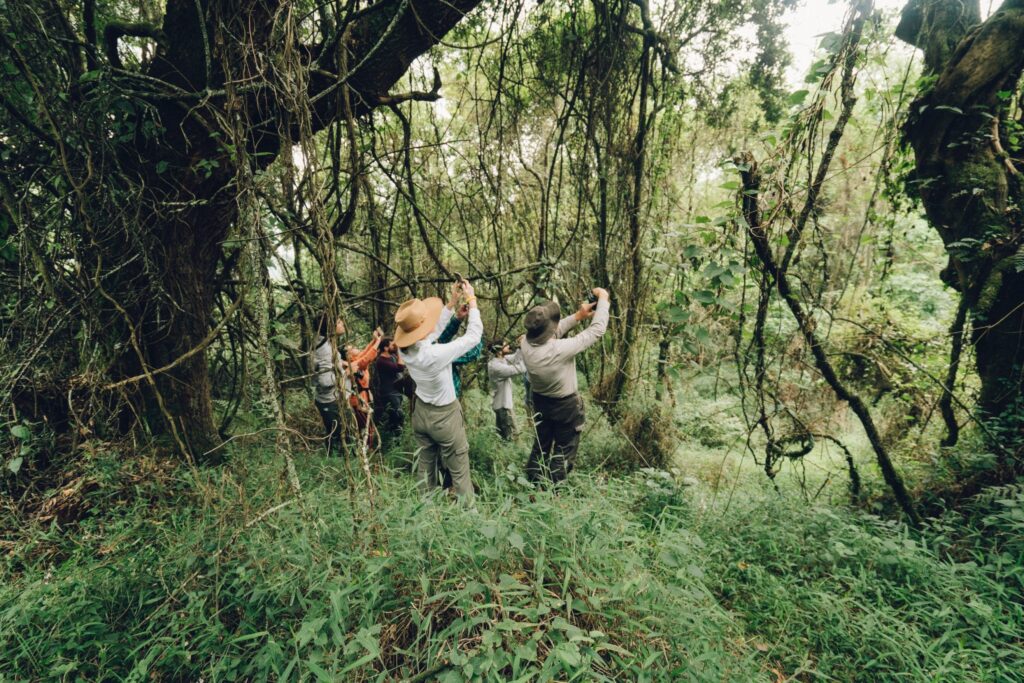The Bwindi Impenetrable National Park is a tropical rainforest found in the southwestern part of Uganda. The park is situated in a forest that was named Bwindi impenetrable because of its thick and dense vegetation cover. The forest spreads across 331 square kilometers and has existed for over 25,000 years. Bwindi impenetrable is one of those protected forests that has successfully remained in its natural state for many decades thus supporting the existence of a diversity of flora and fauna including endangered animal and plant species that inhabit it.

Vegetation in Bwindi impenetrable National Park
Bwindi is mostly known as a destination for mountain gorilla tracking but it is also a great place to experience nature in all varieties and that includes its beautiful vegetation/ fauna. The park has thick natural vegetation with over 400 plant species, of which about 200 of these are tree species, which makes it one of the richest tree destinations in East Africa. The vegetation distribution in Bwindi is mostly influenced by the altitude where areas with higher altitudes have afro montane vegetation and those in lower altitudes have low land and midland vegetation cover. A big part of the forest also has mixed forest vegetation.
The lowest altitude of the forest lies in the northern part of the park and this area is mainly characterized by lowland forest and midland vegetation species like parinari, Newtonia Buchanani, African Mahogany, podocarpus, Symphonia globulifera and Aningeria adolfifriederici are also noticed in the lower altitude areas of the park.

Vegetation in Bwindi
The southern and Eastern parts of the park have a higher elevation and have afro montane forest species like; Entandrophragma, Newtonia and Prunus Africana, Podocarpus gracilior next to the swamps. swamp vegetation is witnessed in more lowlands and acts as a home to most birds, amphibians, and butterflies. Bamboo “Arundinaria Alpina” is still seen in some areas of the park too, which is a feeding ground for most animal species in this forest.
Animals in the forest like elephants, birds, and gorillas have greatly contributed to the dispersion of plant and tree seeds through the forest, which has continually supported the growth and sustainability of vegetation in this forest. The thick vegetation is also attributed to the consistent tropical weather and climatic conditions experienced throughout the year in the Bwindi impenetrable forest.
The thick vegetation cover is of great significance to the ecosystem of this park and the neighboring communities by supporting the co-existence of many animal species in the park thus the reason for its richness in biodiversity. The park is not only a habitat for many animal species but also a water catchment area and a source of many rivers which greatly support agriculture in the local communities.
Tourists who visit Bwindi impenetrable get a chance to explore and encounter this magnificent vegetation during their nature walk through the forest and some during their Gorilla tracking experience. The unique vegetation cover in the different parts of the park highly contributes to the beautiful and scenic views that tourists cannot get enough of while in Bwindi impenetrable forest. Bwindi forest is the ultimate destination for tourists looking for a natural adventure experience.



















